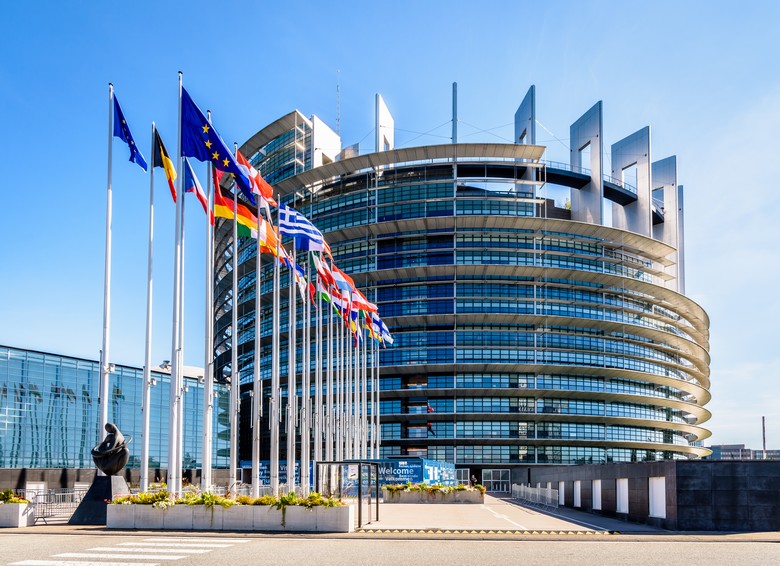Discover the news of the industrial group expert in the protection of sensitive and hazardous materials, as well as the list of trade shows and events in which Tournaire participates.
PFAS : Updates and recent evolutions

Introduction
One can wonder if in today’s modern world, is the increasing number of acronyms just a trend, or does it indicate the augmented reality of a more complex world. One new acronym, PFASs, is undoubtedly gaining popularity among both regulators and businesses. For businesses, if this term is not readily recognized, it is probably the right time to familiarize themselves with it.
What are PFASs?
PFASs stands for Per and Poly Fluoro-Alkyl Substances, which defines a very large group of substances that contain at least one fully fluorinated methyl (CF3-) or methylene (-CF2-) carbon according to the European Chemicals Agency ECHA (1). This very broad definition includes substances in all forms; solid, liquid, and gas, and according to the agency encompasses more than 10 000 molecules (1) and could be up to 14 000 molecules according to other sources.
Below is the official description of the PFASs as it is described in the Annex XV of the draft proposal (2).

One of the challenges is to understand that the name PFASs includes multiple molecules and yet, distinguishes this acronym from the name of some of the molecules it includes. For example, take say the second group from the top of the chart: perfluoroalkane sulfonic acids, for which the acronym is PFSA. Note the subtle difference! The other being the PFOS, perfluorooctane sulfonic acid!
But that is not all!
Some molecules or groups of molecules, which are part of the PFASs definition, have been regulated for decades in other countries.
For example, in Europe, several PFAS are on the REACH candidate list of substances of very high concern (SVHC), such as PFOA, per-fluorinated carboxylic acids (C9-14 PFCAs) and PFHxS. There is an obligation to inform customers and consumers of their presence under the REACH regulation if their concentration is greater than 0.1% mass/mass. Furthermore, PFOS is listed in Annex XVII of substances with restrictions on use since 2008, and PFOA since 2017.
Still in Europe, moving to food regulations, Commission Regulation (EU) No.2022/2388 of December 7, 2022, amending Regulation (EC) No. 1881/2006, which entered into force on January 1, 2023, introduced maximum levels of per-fluoroalkyl substances in certain foodstuffs. Commission Recommendation (EU) 2022/1431 provides for the monitoring of around twenty PFAS in foodstuffs for which no regulatory threshold exists.
The United Nations Stockholm Convention POPs Regulation, on Persistent Organic Pollutants; concerns also put some restrictions on use and marketing of some molecules or groups of molecules such as PFOS, then PFOA and PFHxS.
Those are just a few examples!
Further, there remains good reason to regulate some of those molecules. Some are already prohibited, and others classified as Substances of Very High Concern – SVHC. Take the well-known example of the CFC gases that were used in the past as a refrigerant in our refrigerators. Those gases have been associated with the degradation of the Ozone layer whose purpose is to filter UV radiation from the sun and can be harmful for living organisms in high quantities. The scientific community concluded that the CFC gases were damaging the Ozone layer, contributing to climate change. It seems that the interdiction of CFC gases had a positive influence on the Ozone layer.
Why a new regulation?
Some substances have been studied and can have a significant impact on living organism health, for example molecule PFOA – Pentadecafluorooctanoic acid is now H351 classified or suspected of causing cancer. On December 1, 2023, the International Agency for Research on Cancer (IARC) classified PFOA as “carcinogenic to humans” (Group 1) and PFOS as “possibly carcinogenic to humans” (Group 2B). However, this is not the main rationale for the increasing scrutiny on those substances.
The chemical bond between Carbon and Fluor is recognized as one of the strongest chemical bonds in nature. It is almost unbreakable under normal conditions, and therefore the molecules remain in the environment. That is why the PFASs are most often called “forever chemicals”.
The persistence of the PFASs is the main concern that the regulatory bodies want to address today across the globe. The regulations aim to significantly reduce the amount of PFASs substances on the planet. Recent studies have shown that we can find PFASs substances in living organisms, including humans, in water, and in soils at a large scale.
Some in Europe may remember the map by Forever Pollution Project published in many newspapers across the continent. In the US, The PFAS Project Lab published a map of the water contamination by PFAS on US soil.
Under the push of rising awareness of these substances, their potential harm and well-known life cycle, and better understanding of the global opinions, some regulators have committed to favor new sets of laws to simply ban those substances. The magnitude and scale of the ban differs by region.
What about the EU draft?

European Chemicals Agency – ECHA published the draft of the proposed regulation on February 7th, 2023. This draft is quite clear on the intention, a simple ban of all PFASs due to the persistence of those molecules in the environment.
Based on this proposal, ECHA called for comments and opened two committees to evaluate all comments and answers gathered. One committee is about Risk Assessment (RAC) which is reviewing the scientific aspect of PFASs and available knowledge, whilst the second committee Socio-Economic Analysis (SEAC) will focus on the economic impacts of the regulation.
At the time of this article, the RAC and SEAC are still working on evaluating all the submissions received during the call for evidence after the draft regulation was published. The latest communication is from June 13th, 2024, where the 2 committees have reached provisional conclusions on 4 sectors and continue to review others (3). Meetings will continue until at least September 2024.
It is not clear yet when the final opinions of the committees will be submitted to the European Commission, which will the voting process to begin.
What about other regions?

In the United States, two different levels must be considered: federal and state. The federal level harmonizes the regulation for the whole country, while state regulation may differ from one to another. This is particularly the case when it comes to PFASs.
At the federal level, United States Environmental Protection Agency – EPA, took a pretty significant step when they published the PFAS Strategic Roadmap with clear Commitments to Action (published October 2020) for the period 2021-2024 with a clear intention to protect the communities that have been suffering from PFAS exposure (4).
Therefore, in its National Primary Drinking Water Regulations (NPDWR), EPA is regulating 6 molecules, including PFOS, PFOA or PFNA and in the Hazard index category a combination of some in very low quantities (5). This regulation obviously restricts significantly the use of those products with some aggressive Maximum Contaminant Level accepted.
Another initiative occurs under the Toxics Release Inventory – TRI where more than 1,000 PFA substances are to be reported by industrial and federal facilities to better understand the usage of those substances and potential impacts. The collected information is then made available to the public.
The US Federal Drug Administration – FDA is also regulating PFAS for use in specific food contact applications. Although the FDA’s approach is to work with industries to phase out the use of PFAS, the scope of the authorized applications is clearly defined such as nonstick coating applications, sealing gaskets for food processing equipment and manufacturing aids. The scientific approach and updated rigorous testing translate into regular reviews of their authorized applications (6).
At the State level this becomes a case by case basis and is continually changing! At the time of this article, about 25+ states have specific regulation on PFAS. We are not going to review the specific regulations of each, and should you have any questions regarding a specific state, it is highly recommended to investigate your state’s regulations independently.
However, we can draw some conclusions when it comes to states’ regulations. Some states are indeed moving to exclude the use of certain PFAS molecules, usually specific to 6 or 8 molecules or group of molecules and related to the EPA list. Other states are regulating very specific applications, which are clearly defined in their regulations, while others are doing a combination of both.
Note that in most cases, those regulations come either with a mandatory obligation to declare the presence of PFAS in the final product, thus impacting directly the labeling of the product with the intent to inform the consumer or the mandatory registration at a state level of the product containing PFAS substances. Here as well some states may combine the two obligations. The list of applications can be large for some states, a few examples to illustrate: fire extinguishers, fire extinguishing agents for fire extinguishers and foams, treated fabrics or clothing with water or oil repellent properties, treated floor coverings with water or oil repellent properties, and so on.
The concern around PFAS is global. In Asia for example some countries are already contemplating putting in place specific regulation when it comes to PFASs substances.
In China, The Chinese Ministry of Ecology and Environment published in December 2022 its list of New Pollutants for Priority Management in 2023 which includes two PFASs substances, namely PFOA and PFOS.
Japan prohibits the use of PFOS in some application and is contemplating new regulations on this topic as well while having provisional limits for drinking water. Japan’s Ministry of Economy, Trade and Industry (METI) issued Cabinet Order No. 343 which was released on February 1st 2024 and put into force on June 1st 2024 which prohibits the use, manufacture and import of PFHxS and its salts and prohibits the import of ten specific categories of products.
What to do and when?

The good news is this is where we have a lot of clarity!
Consider the increasing level of scrutiny and the environmental push to ban PFASs substances in Europe, the US, and in Asia. This is just a beginning and there are few doubts that it will not only continue but increase.
Consider previous regulations histories, such as the Bisphenol-A regulatory path. It started with a very narrow scope (baby bottles at first) to extend quickly to baby toys and along the years became a generic regulation applying to all products.
It is fair to imagine PFASs regulations will follow the same steps, starting with some applications or molecules, or with a general approach to becoming a general regulation. Threshold limits, if any, will drop over time to end up to levels that are barely measurable.
Lastly, you may just consider that you are just doing the right thing by reducing the amount of forever chemicals, thus reducing the pressure on our planet and preserving living organisms on it. Let’s bring some nuance here for the sake of clarity: reducing waste and pollutants in general, whether it is food, plastics, or PFAS is just common sense, the right thing to do, don’t you think?
However easier said than done! Indeed, due to the strong bond between the Carbon and Fluor, some PFASs have unique properties, that’s why they are widely used in industry and part of many of the products we use in our daily lives. Replacing them is going to be a challenge in many industries, including the packaging industry.
It is likely one to one replacement will be impossible to reach. Therefore, it will be a case-by-case approach, considering the specific parameters of a given application.
So, the best advice is really to embrace the change and prepare for a total ban! Since it will be challenging for some specific applications to find a good enough replacement, the recommendation is to start right away the substitution work, which may take years in some cases, not to mention the qualification work for regulated industries (pharmaceutical or aviation for example).
Tournaire update on PFASs
At Tournaire we worked diligently to substitute the PFAS in our processes and in our product.
For example, when it comes to the liners in our caps. Indeed, some applications are using polytetrafluoroethylene- PTFE, a molecule classified in the fluoropolymer family and therefore are included in the PFASs definition as a liner. PTFE presents a unique combination of very high chemical resistance and inertia, which qualifies it as a good liner for some chemicals packaged in our aluminum bottles.
Here again, it will depend on the product packaged and the requirements and specifications of the application. So, let’s not wait and start to look at alternatives. Our team of engineers is ready to assist you sharing the decades of experience and knowledge accumulated since our inception in 1833 and support your testing efforts to find the best alternative for your specific application.
Conclusion
PFASs is a complex and fast-moving field, especially for companies trading all over the world. When it comes to PFAS, we can only imagine that regulatory bodies all over the world will continue to push regulations, which will become more stringent over time.
Therefore, it is time for industries to embrace change and start right away on substitutions with the right partners. At Tournaire, our commitment to sustainability and pioneering spirit pushes us to see in this challenge an opportunity to support our customers, strengthening their competitive advantage and create value for their customers and stakeholders.
So, feel free to reach out to our team and start today shaping a new future for us all.
Disclaimer:
This article is not a regulatory note nor a legal advice. Its intent is to simplify and share some information on this complex topic, noting that it is a fast changing field. It does not reflect a particular opinion on this topic either. Should you have specific question on PFASs regarding your processes or products we strongly recommend you to take a legal advice.
Definitions

- PFAS (Per- and Polyfluoroalkyl Substances) : A group of over 10,000 chemical compounds that contain at least one fully fluorinated carbon atom. They are used in many industries for their resistance to water, oil, and heat.
- Forever pollutants : A term used to describe PFAS because of the extreme stability of the carbon-fluorine bonds, which make them persist in the environment, unable to degrade naturally.
- PFOS (Perfluorooctanesulfonic acid) : A specific type of PFAS, regulated due to its potentially carcinogenic effects and its persistence in the environment.
- PFOA (Perfluorooctanoic acid) : Another well-known PFAS, classified as a probable carcinogen by the International Agency for Research on Cancer (IARC) and already banned in many countries.
- REACH Regulation : European regulation on chemicals requiring communication of the presence of certain PFAS if their concentration exceeds 0.1% by weight in products.
- SVHC (Substances of Very High Concern) : Substances identified under REACH regulations for their high risks, including certain PFAS like PFOS and PFOA.
- Stockholm Convention on POPs (Persistent Organic Pollutants) : An international treaty that regulates persistent chemical substances, including certain PFAS, to limit their environmental impact.
- Carbon-Fluorine Bond : One of the strongest chemical bonds, which gives PFAS their resistance to degradation but also causes their environmental persistence.
- CFC (Chlorofluorocarbons) : A historical example of regulated chemicals due to their environmental impacts (damaging the ozone layer), similar to the reasoning behind PFAS regulations.
- Circular economy : A concept applied to chemical management, aiming to minimize waste production and promote material recyclability, a critical issue with PFAS.
- Usage restrictions : Regulatory measures aimed at limiting the use of hazardous substances like PFAS, often introduced through regulations specific to certain sectors or products.
- Forever Pollution Project : An initiative mapping PFAS pollution, illustrating the spread of these substances in soils and water across Europe.
- ECHA Public Consultation (European Chemicals Agency) : A regulatory process where stakeholders can submit opinions or additional information on proposed PFAS restrictions.
- NPDWR (National Primary Drinking Water Regulations) : A federal regulation in the United States establishing strict limits on PFAS concentrations in drinking water, aiming to protect public health.
- H351 – Suspected Carcinogen : A classification indicating a substance is suspected of being carcinogenic to humans, such as PFOA under international regulations.
Sources and for more information
- (1): https://echa.europa.eu/fr/-/echa-publishes-pfas-restriction-proposal
- (2): https://echa.europa.eu/documents/10162/1c480180-ece9-1bdd-1eb8-0f3f8e7c0c49, Page 36
- (3): https://echa.europa.eu/fr/-/highlights-from-june-2024-rac-and-seac-meetings
- (4): United States Environmental Protection Agency
- (5): https://www.epa.gov/ground-water-and-drinking-water/national-primary-drinking-water-regulations
- (6): https://www.fda.gov/food/process-contaminants-food/authorized-uses-pfas-food-contact-applications
Want to Know More? Contact the Tournaire Experts
Our guide has given you an overview of the latest developments in PFAS regulations as well as Tournaire’s excellence in providing safe and innovative packaging solutions. If you would like to explore in more detail how our products and services can meet your specific needs, we are here to help.
Our experts are available for personalized consultations.
Visit our contact form to share your needs and questions with us. A member of our team will respond as quickly as possible to provide you with expert advice tailored to your industrial context.
Tournaire is committed to providing not only high-quality products but also support and expertise that make a difference. Contact us today to move your project forward with a partner you can rely on.